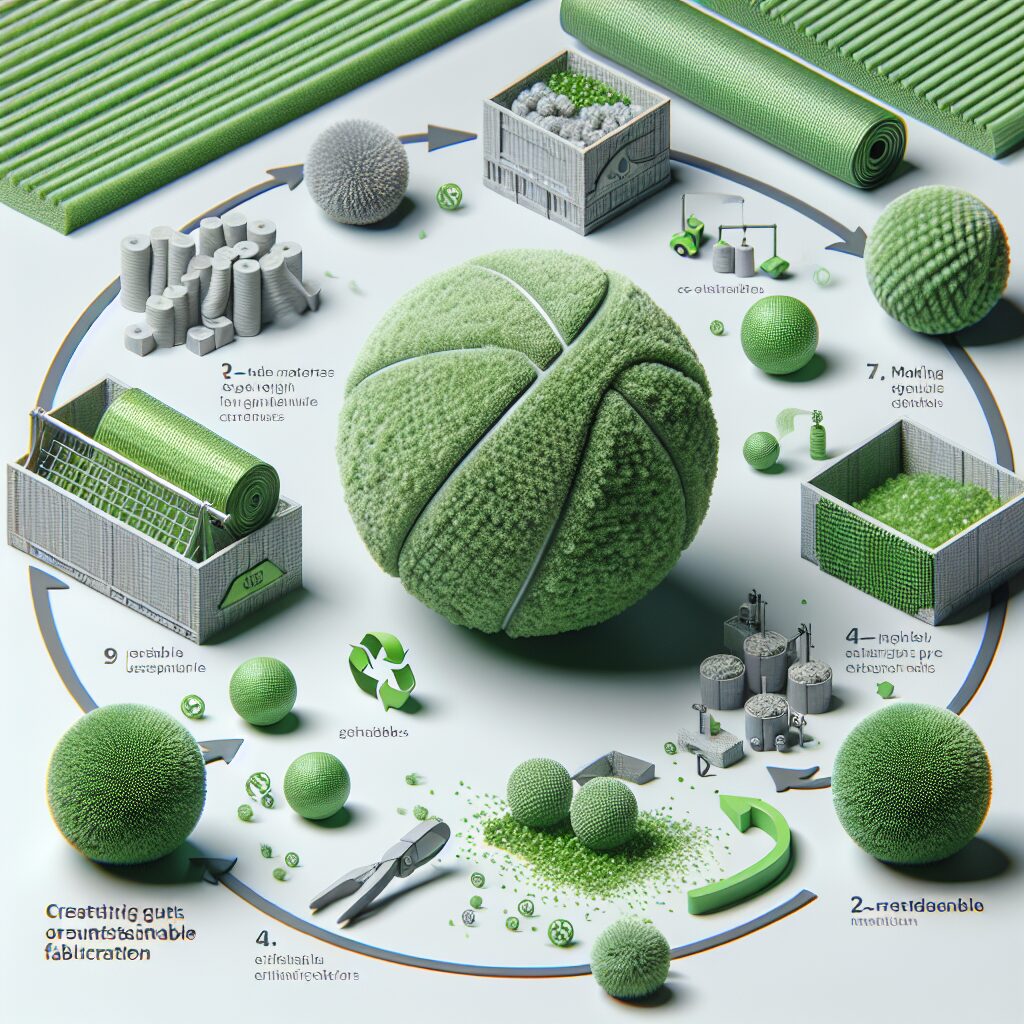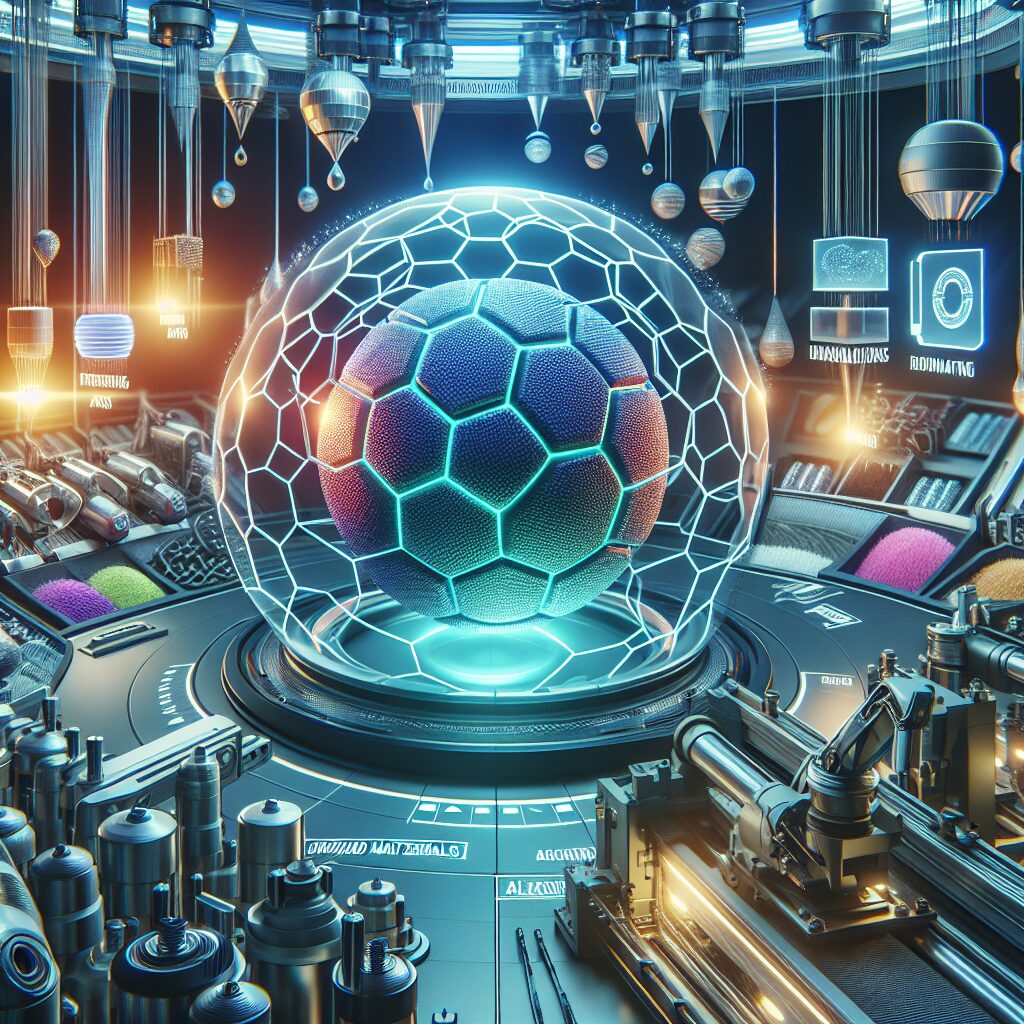Advanced manufacturing is revolutionizing the world of ball fabrication. But what exactly does advanced manufacturing mean in this context? Advanced manufacturing refers to the integration of innovative technologies and processes to optimize and streamline the production of goods. In the realm of ball fabrication, this translates to the use of cutting-edge techniques that enable precision manufacturing, higher product quality, and increased production efficiency.
One of the significant impacts of advanced manufacturing in ball fabrication is the ability to create balls with unparalleled precision. With the implementation of advanced technologies such as computer numerical control (CNC) machines and automated processes, manufacturers can achieve incredibly tight tolerances, ensuring consistency in size, shape, and weight. This precision is crucial for industries that rely on balls for critical applications such as aerospace, automotive, and medical equipment.
Moving forward, we will delve into the key takeaways from the world of advanced manufacturing in ball fabrication. We will explore the importance of scalability, the role of materials, and the potential for customization. By understanding these key factors, we can grasp the full extent of how advanced manufacturing is transforming the ball fabrication industry and the endless possibilities it presents.
Key Takeaways
1. Advanced manufacturing techniques are revolutionizing the ball fabrication industry, allowing for greater precision and customization. Cutting-edge technologies like 3D printing and robotics are streamlining production processes and enabling the creation of intricate designs.
2. By leveraging advanced manufacturing, ball manufacturers can meet the increasing demands of diverse markets, producing balls that cater to different sports, industries, and customer preferences. Customization options include size, weight, material, texture, and even color, leading to enhanced performance and user experience.
3. The utilization of advanced materials, such as composites and smart materials, has significantly improved the durability and performance of balls. Innovative materials offer benefits like increased strength, reduced weight, enhanced bounce, and improved aerodynamics, pushing the boundaries of what is possible in various sports and applications.
4. The integration of data analytics and sensors in ball fabrication allows for data-driven insights into performance and quality control. Real-time tracking of various metrics, such as spin rate, impact force, and trajectory, enables manufacturers to optimize design and manufacturing processes, leading to better products and informed decision-making.
5. Advanced manufacturing not only brings advancements to the product itself but also enhances sustainability in the ball fabrication industry. Reduced waste, energy-efficient processes, and the use of eco-friendly materials contribute to a more environmentally conscious approach, aligning with global sustainability goals and consumer expectations.
What is the Role of Advanced Manufacturing in Leading the Way in Ball Fabrication?
The Evolution of Manufacturing Techniques
With advancements in technology, traditional methods of ball fabrication are quickly being replaced by advanced manufacturing techniques. These techniques utilize cutting-edge machinery and processes to produce high-quality balls with superior precision and accuracy. Gone are the days of manual labor and guesswork; advanced manufacturing is now the driving force behind ball fabrication.
The Benefits of Advanced Manufacturing in Ball Fabrication
Advanced manufacturing brings numerous benefits to the table when it comes to ball fabrication. Firstly, it allows for increased efficiency, as machines can operate around the clock with minimal human intervention. This leads to reduced production time and higher output rates, meeting the ever-growing demand for precision balls in various industries.
Moreover, advanced manufacturing ensures consistent quality. Every ball produced undergoes rigorous quality control measures, ensuring that they meet the required specifications. This results in balls with superior roundness, surface finish, and dimensional accuracy, meeting the stringent requirements of industries such as aerospace, automotive, and medical.
Additionally, advanced manufacturing techniques enable the fabrication of balls from a wide range of materials. From highly durable steel to specialized alloys, manufacturers can now cater to diverse applications and industries. This versatility opens up a myriad of possibilities and allows for customization to meet specific customer needs.
The Role of Automation in Ball Fabrication
Automation plays a vital role in advanced manufacturing for ball fabrication. Computer Numerical Control (CNC) machines and robotic systems are extensively used in the production process. These machines can be programmed to perform complex operations with utmost precision, eliminating human errors and ensuring consistent results.
CNC machines utilize advanced techniques such as grinding, lapping, and polishing to achieve the desired specifications for balls. They operate with extreme accuracy, ensuring precise dimensions and surface finishes. Robotic systems aid in the handling and sorting of balls, further enhancing efficiency in the manufacturing process.
Advancements in Material Science
Innovation in material science has revolutionized ball fabrication. Manufacturers now have access to a wide range of materials with varying mechanical properties, allowing for optimal performance in different applications. Advanced alloys, ceramics, and composites are among the materials used in ball fabrication, each offering unique advantages depending on the desired application.
These advancements in material science have also led to the development of specialized coatings and treatments. Surface coatings can enhance wear resistance, reduce friction, and improve corrosion resistance. These coatings, coupled with advanced manufacturing techniques, result in balls that can withstand harsh operating conditions and offer extended service life.
Guides for Excelling in Advanced Manufacturing: Leading the Way in Ball Fabrication
1. Embrace Automation and Robotics
To stay competitive in the field of ball fabrication, it is crucial to invest in advanced machinery and automated systems. Embracing automation not only increases efficiency but also ensures consistent quality and precision in ball manufacturing.
2. Stay Updated with Material Science
As new materials and coatings are constantly emerging, manufacturers need to stay up-to-date with the latest advancements in material science. This knowledge allows for the selection of the most appropriate materials for specific applications, ensuring optimal performance and customer satisfaction.
3. Invest in Research and Development
Continuous research and development efforts are essential to stay ahead in the field of advanced manufacturing for ball fabrication. Investing in R&D enables manufacturers to explore new techniques, materials, and surface treatments, thereby pushing the boundaries of what is possible in ball fabrication.
4. Collaborate with Customers
Collaboration with customers plays a significant role in advanced manufacturing. Understanding their specific requirements and challenges enables manufacturers to tailor their processes, materials, and coatings to meet their needs effectively. Building strong relationships with customers fosters innovation and drives the industry forward.
5. Quality Control is Key
Maintaining stringent quality control measures throughout the manufacturing process is crucial for the success of ball fabrication. Emphasize quality testing and inspection at every stage to ensure that the produced balls meet the required specifications and surpass customer expectations.
End of the article.
Frequently Asked Questions
1. What is advanced manufacturing in ball fabrication?
Advanced manufacturing in ball fabrication refers to the use of cutting-edge technologies and processes to produce high-quality balls for various applications. It involves the integration of automation, robotics, and advanced materials to streamline production and improve product efficiency.
2. What are the advantages of advanced manufacturing in ball fabrication?
Advanced manufacturing offers several advantages in ball fabrication, including increased precision, enhanced product consistency, and improved production speed. It allows manufacturers to produce balls with higher accuracy, tighter tolerances, and better surface finishes, resulting in superior performance and reliability.
3. How does advanced manufacturing impact the quality of fabricated balls?
Advanced manufacturing techniques ensure higher quality fabricated balls by eliminating human errors and inconsistencies. The use of automated processes and sophisticated quality control systems minimizes defects, enhances dimensional accuracy, and ensures uniformity in the final product.
4. What industries benefit from advanced manufacturing in ball fabrication?
Multiple industries benefit from advanced manufacturing in ball fabrication, including automotive, aerospace, energy, industrial machinery, and medical. These industries rely on high-performance balls for applications such as bearings, valves, actuators, and precision instruments.
5. Can advanced manufacturing reduce production costs in ball fabrication?
Yes, advanced manufacturing techniques can help reduce production costs in ball fabrication through increased efficiency and lower error rates. Automation and streamlined processes minimize material waste, decrease labor requirements, and optimize production throughput, resulting in cost savings.
6. Are there any environmental benefits to advanced manufacturing in ball fabrication?
Absolutely. Advanced manufacturing promotes sustainable practices and reduces environmental impact in ball fabrication. The use of efficient processes, optimized material usage, and reduced energy consumption contribute to a greener manufacturing ecosystem.
7. How does advanced manufacturing contribute to innovation in ball fabrication?
Advanced manufacturing enables constant innovation in ball fabrication by facilitating the development and implementation of new materials, coatings, and designs. Manufacturers can experiment with novel concepts and techniques, pushing the boundaries of what is possible and driving advancements in ball technology.
8. Can advanced manufacturing customize ball fabrication according to specific requirements?
Yes, advanced manufacturing allows for greater customization in ball fabrication. Manufacturers can tailor the size, material, precision, and performance characteristics of the balls to meet the specific requirements of different industries and applications.
9. How does advanced manufacturing improve product performance in ball fabrication?
With advanced manufacturing, ball fabrication achieves improved product performance through increased precision, uniformity, and consistency. These factors directly impact the reliability, durability, and functionality of balls, resulting in enhanced overall performance in their respective applications.
10. What is the future of advanced manufacturing in ball fabrication?
The future of advanced manufacturing in ball fabrication looks promising. As technology continues to evolve, we can expect further advancements in automation, robotics, artificial intelligence, and materials science. This will lead to even greater efficiencies, higher quality products, and increased innovation in the field.
Final Thoughts
Advanced manufacturing has revolutionized the field of ball fabrication, leading the way towards a new era of precision, quality, and efficiency. With the advent of automated processes, robotics, and advanced materials, the production of balls has reached unprecedented levels of accuracy and consistency. This not only benefits industries that rely on high-performance balls but also drives innovation and fosters sustainable manufacturing practices. As advanced manufacturing continues to evolve, we can anticipate even more exciting developments and advancements in ball fabrication, shaping the future of various industries and pushing the boundaries of what is possible.




